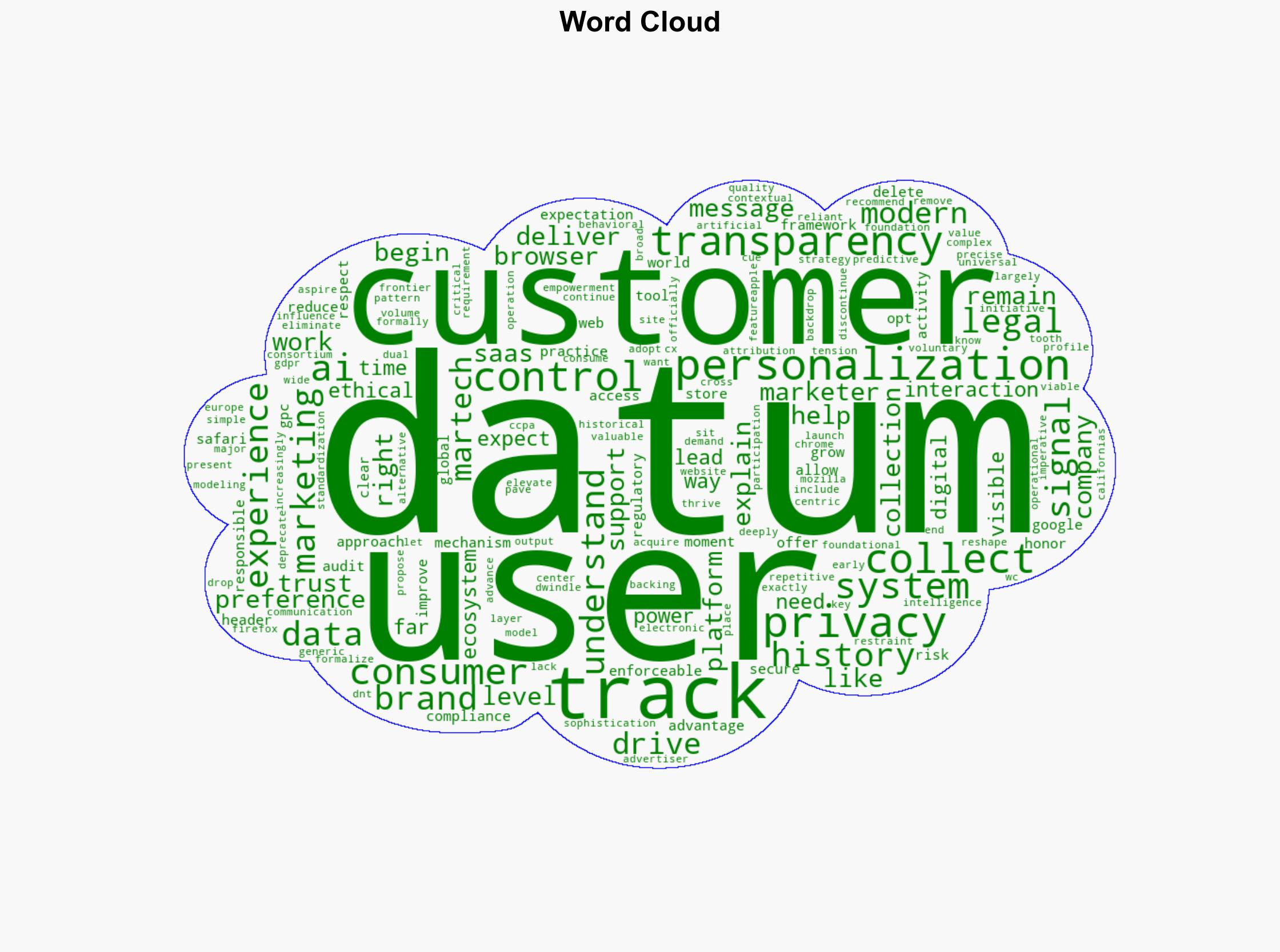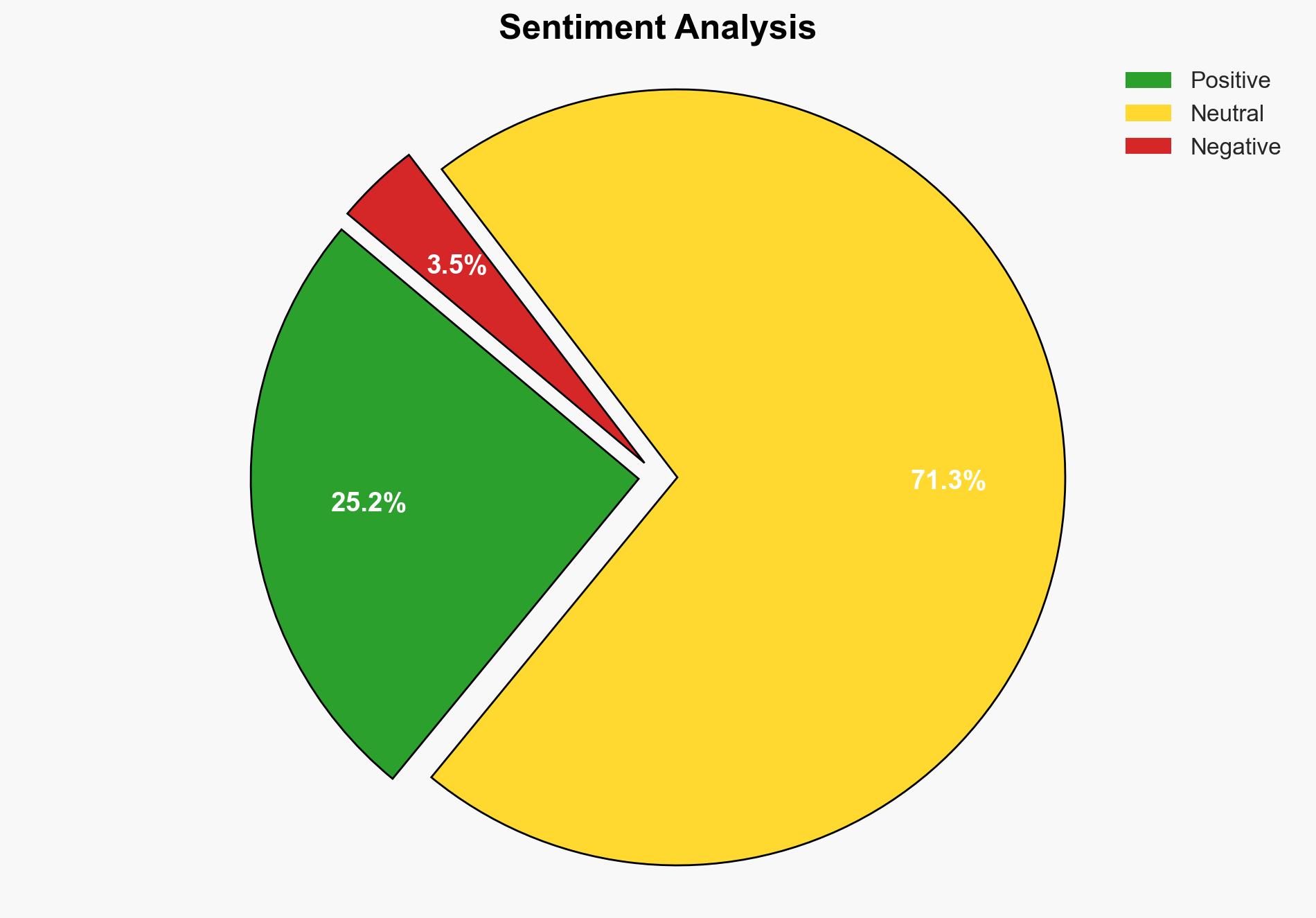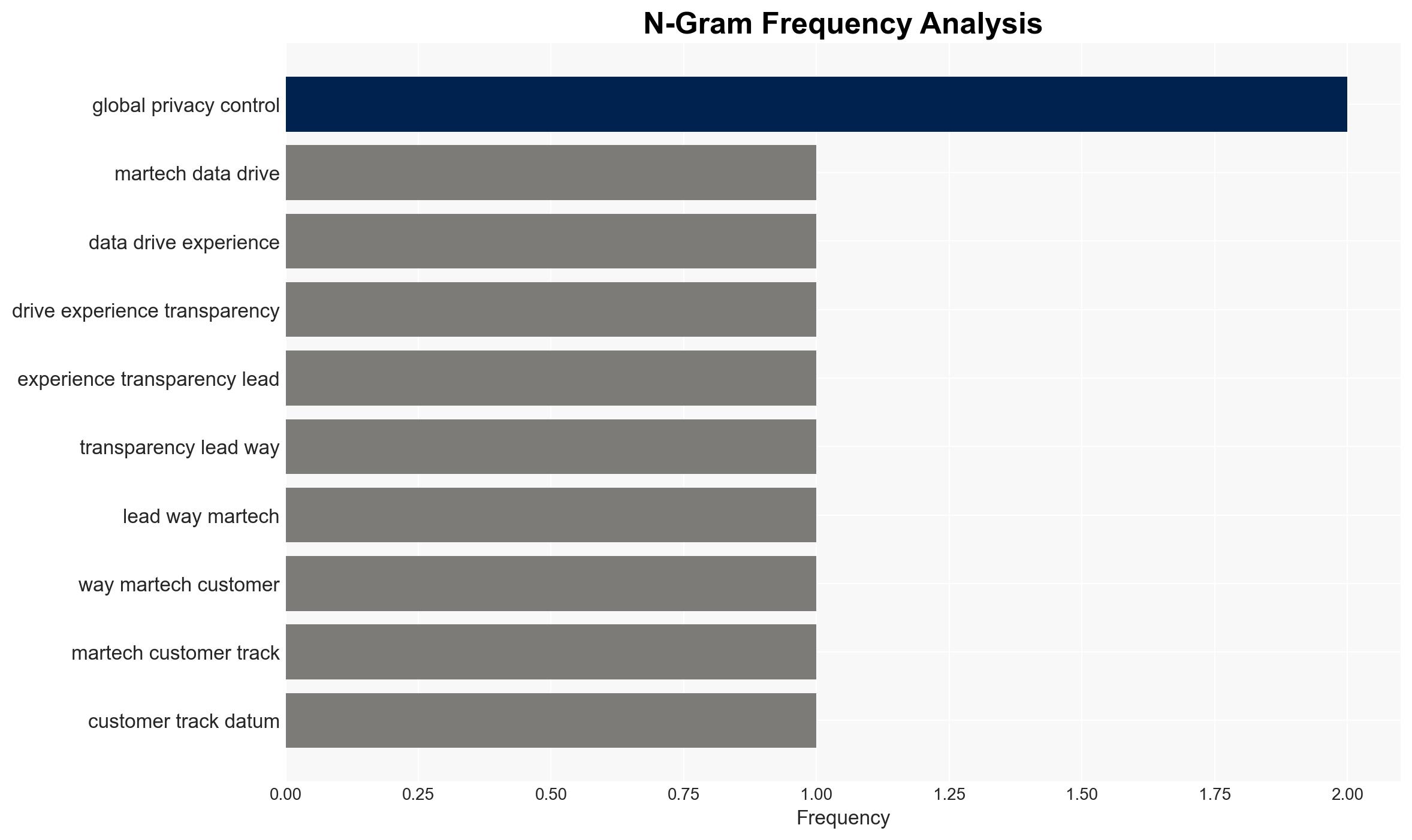MarTech Data Drives Better Experiences But Transparency Must Lead the Way – Martech.zone
Published on: 2025-11-15
AI-powered OSINT brief from verified open sources. Automated NLP signal extraction with human verification. See our Methodology and Why WorldWideWatchers.
Intelligence Report:
1. BLUF (Bottom Line Up Front)
The strategic judgment is that the increasing demand for transparency in MarTech data practices is likely to reshape the industry, with companies that prioritize transparency and user empowerment gaining a competitive advantage. This assessment is made with moderate confidence due to the evolving regulatory landscape and consumer expectations. Recommended action includes adopting transparent data practices and preparing for potential regulatory changes.
2. Competing Hypotheses
Hypothesis 1: Companies that prioritize transparency in data practices will gain a competitive advantage as consumer trust becomes a critical differentiator in the MarTech industry.
Hypothesis 2: The demand for transparency will lead to increased regulatory intervention, which could impose significant compliance costs and operational challenges on MarTech companies.
Hypothesis 1 is more likely because consumer expectations for transparency are increasing, and companies that meet these expectations are likely to build stronger customer relationships. While regulatory intervention is a possibility, the proactive adoption of transparent practices can mitigate compliance risks.
3. Key Assumptions and Red Flags
Assumptions: It is assumed that consumer demand for transparency will continue to grow and that regulatory bodies will not impose overly burdensome requirements that stifle innovation.
Red Flags: Potential red flags include resistance from companies to adopt transparent practices due to perceived competitive disadvantages and the possibility of regulatory bodies enacting stringent measures that could disrupt the industry.
4. Implications and Strategic Risks
The primary implication is that MarTech companies must adapt to a landscape where transparency is a key competitive factor. Strategic risks include potential regulatory penalties for non-compliance and loss of consumer trust if transparency is not prioritized. There is also a risk of increased cyber threats as companies handle more sensitive data with greater transparency.
5. Recommendations and Outlook
- Adopt transparent data practices and clearly communicate them to consumers to build trust.
- Prepare for potential regulatory changes by staying informed and engaging with policymakers.
- Invest in cybersecurity measures to protect consumer data in a transparent environment.
- Best-case scenario: Companies that adopt transparency gain a competitive edge and foster strong consumer loyalty.
- Worst-case scenario: Regulatory interventions impose significant costs, and companies face backlash for inadequate transparency.
- Most-likely scenario: A gradual shift towards transparency with moderate regulatory changes and increased consumer trust for compliant companies.
6. Key Individuals and Entities
No specific individuals are mentioned in the source text. Key entities include MarTech companies, regulatory bodies (e.g., California’s CCPA, Europe’s GDPR), and major web browsers (e.g., Firefox, Chrome, Safari).
7. Thematic Tags
Cybersecurity, Data Privacy, Regulatory Compliance, Consumer Trust, MarTech Industry
Structured Analytic Techniques Applied
- Adversarial Threat Simulation: Model and simulate actions of cyber adversaries to anticipate vulnerabilities and improve resilience.
- Indicators Development: Detect and monitor behavioral or technical anomalies across systems for early threat detection.
- Bayesian Scenario Modeling: Quantify uncertainty and predict cyberattack pathways using probabilistic inference.
- Narrative Pattern Analysis: Deconstruct and track propaganda or influence narratives.
Explore more:
Cybersecurity Briefs ·
Daily Summary ·
Support us
·





